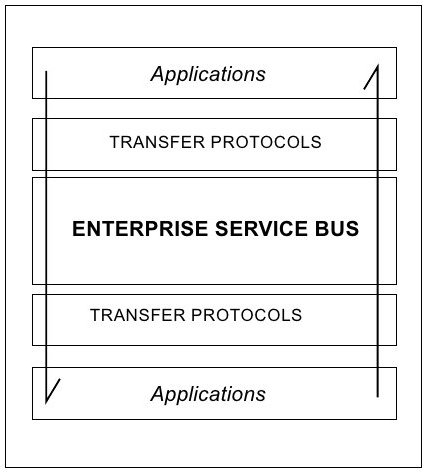
Before we explore Apache’s middleware offering, it’s important to know the various types of middleware out there. Middleware are classified into types based on the primary functions they perform. A popular classification is by Judith Hurwitz, in her paper, Sorting Out Middleware, according to which middleware can be:
- Embedded middleware: As the name suggests, this type of middleware handles embedded applications (software or firmware).
- RPC middleware: RPC (Remote Procedure Call) middleware communicates with applications using calls
- Object request broker: Here, applications can send and receive objects.
- SQL-oriented data access middleware: Primarily meant for database-related applications, this class of middleware sits between applications that communicate with databases.
- Message-oriented middleware: This is where Apache ActiveMQ fits in. Message-oriented middleware mediate the communication or messages, between applications.
Introducing Apache ActiveMQ
One of the best open source solutions for message broking is Apache ActiveMQ. It is a prime product used in enterprise environments, because it supports advanced features such as multiple instances to store messages, and clustering environments.
The backbone of ActiveMQ is what’s known as JMS — the Java Messaging Service. JMS is an API implementation within J2EE (Java Enterprise) which is specifically for message-oriented applications.
Features of ActiveMQ
There is a long list of features on the ActiveMQ website, but I will highlight and discuss the key ones:
- Cross-language compliance and compatibility: This is an important feature, since applications may be written in different languages like C/C++, Python, Ruby, Java, etc. Allowing cross-language compatibility allows communication between very diverse applications, and allows seamless integration. This is probably the most important feature for message-oriented middleware.
- AJAX and REST support: Web services and applications can easily communicate, since AJAX and REST are part of the core of Web services and applications out there.
- Compatible with various transport protocols: Important because messages can be transferred effectively only if there is a wide variety of protocols for transport. Examples of transport protocols include TCP (Transmission Control Protocol), UDP (User Datagram Protocol) and SSL (Secure Socket Layer).
- Support for persistence: In computing terms, persistence is the capability of an application to preserve its state. In other words, it’s the ability of the application to remember. This is done by the program recording what it needs to remember in text files or databases. In the context of ActiveMQ, persistence is used mainly for the database-linked persistence of applications.
- High-performance computing and high availability: In simple words, this is nothing but ensuring that any form of failure doesn’t affect the user. This is achieved mainly through clustering. Here, many instances of the application (either on the same machine, but usually spread across multiple physical machines) are running, in such a way that if one instance fails, another one takes over. This mission-critical feature is a big plus in ActiveMQ.
Usage scenario
The product is great, sounds completely robust and the features are fine and dandy, but where is it used? I will demonstrate a scenario where ActiveMQ (or usually any message-broking middleware) would work. For the sake of an explanation, I will cite a specific scenario where ActiveMQ behaves like a message bus — or, more specifically, an enterprise service bus. Figure 1 is a diagram that will explain it.

Other popular open source middleware
Apart from ActiveMQ, the world of enterprise computing is full of other open source middleware. Here are some examples, with a short description of each.
- JDBC: The famous Java DataBase Connectivity API is an SQL-Oriented Data Access middleware. It allows Java programs to have database access, and thus be persistent. Another similar one is ODBC (Open DataBase Connectivity).
- CORBA: Developed by the Object Management Group (OMG), the Common Object Request Broker Architecture is a class of middleware that fits the object-broker type. Essentially, it allows communication between many applications and software components to exchange objects, even when they are written in different languages and are running on different computers. Note that CORBA is a standard, and not middleware, per se. A popular open source implementation of CORBA is MICO (MICO is a recursive acronym for Mico Is COrba).
This is an introduction to the concept of middleware. It goes way deeper than the scope of this article, but hopefully what you read here will help you as a starting point. Happy learning!
















































































[…] Understanding Middleware with Apache ActiveMQ – LINUX For You […]
When talking about CORBA, you say: “between many applications and software components to exchange objects”
FALSE!
Objects are not exchanged – method calls are made on objects.
Objects don’t “move” (except in the context of CCM) – clients invoke methods on objects located at the server.